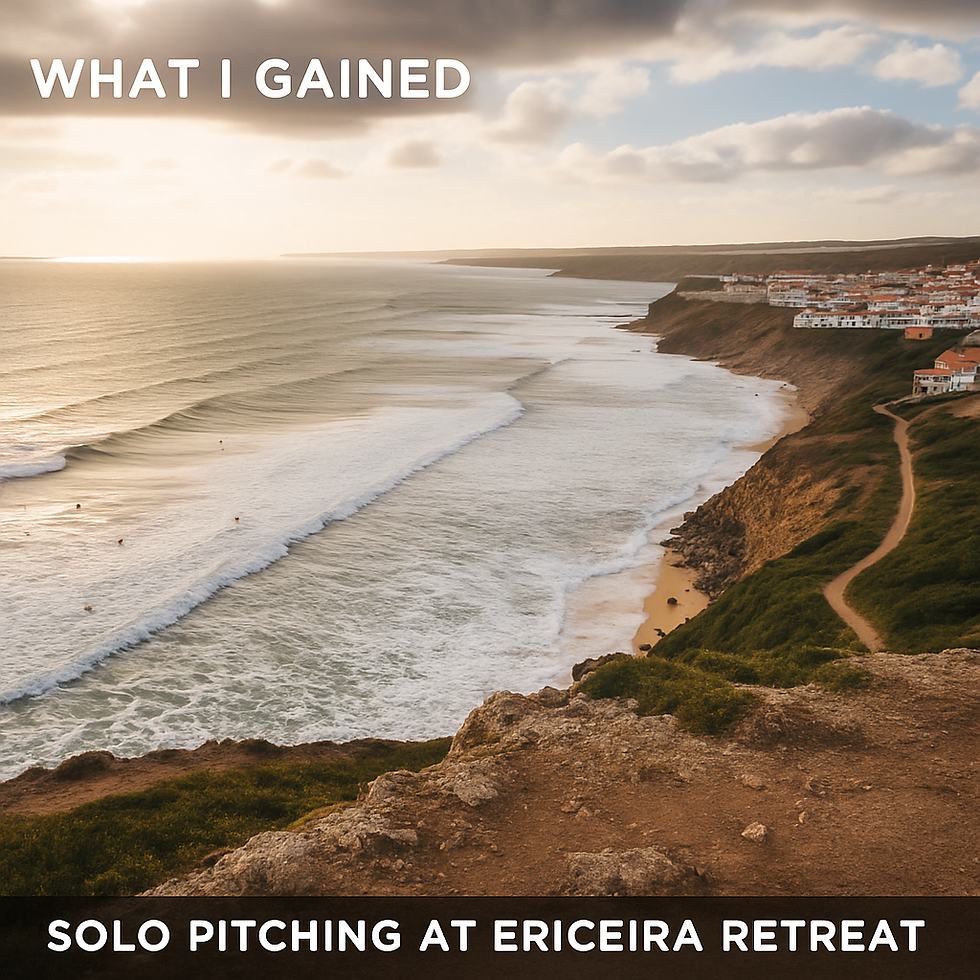Emotional UX: How We’re Designing a Self-Dating App That Loves You Back
- admin
- Apr 14
- 4 min read
Dopamine-driven apps dominate our lives — scroll, swipe, repeat. But what if tech could do something deeper? What if it could actually help you feel safe, seen, and more connected to yourself? In this post, I break down how we’re designing our self-dating app with emotional UX in mind — and why it's time for tech to have a heart.
❤️ What Even Is Emotional UX?
Most product designers talk about user experience in terms of speed, friction, and flows.
But emotional UX? That’s about how your product makes people feel — not just what it helps them do.
It’s the moment an app says “You’re doing your best” instead of pushing another notification.It’s the soft sound when you complete a journal entry, or the calm colors that don’t spike your nervous system.It’s tech that feels like a friend — not a slot machine.
We’re not building an app that grabs attention.We’re building one that holds it — gently.
🧠 Most Apps Are Designed to Hook You, Not Hold You
Let’s call it out:So many of today’s apps are built around dopamine-first design.
Notifications engineered to create FOMO
Infinite scrolls that hijack your attention
Quick reward loops with zero depth
They get users, sure. But they also get anxiety, disconnection, and burnout.
What’s the cost?
We become users, not humans. Addicted to more, disconnected from meaning.
But what if tech could do the opposite?
🌱 The Mission: Tech That Nurtures, Not Numbs
Our app isn’t a “self-care” gimmick. It’s a self-connection platform rooted in emotional design.
The goal?To create digital experiences that mimic real-world emotional safety — especially for solo users.
Because let’s be honest — a lot of people using our app are in transition:
Healing from heartbreak
Feeling stuck in their dating life
Rebuilding their relationship with themselves
They don’t need “just one more feature.”They need a space to breathe, reflect, and be gently guided back to themselves.
🧩 How We’re Building Emotional UX Into Our App
Here’s how we’re designing the self-dating experience with emotion-first thinking:
1. Check-In Before Opt-In
Before showing you any “next steps,” we ask:🧘 “How are you feeling today?”
It’s a tiny UX moment, but it changes everything.Because when someone pauses to notice how they feel, the app becomes an anchor, not an escape.
2. Gentle Design Language
We ditched hyper-motivational copy like:🚫 “Crush your day!”🚫 “Smash your goals!”🚫 “Go harder!”
And replaced it with: ✅ “Take it slow today.”✅ “You’re allowed to rest.”✅ “Growth isn’t always linear — and that’s okay.”
The tone is everything. We want the app to talk to users like their emotionally intelligent best friend.
3. Subtle Visuals That Regulate, Not Stimulate
Bright red = urgency.Harsh vibrations = stress.Pushy badges = pressure.
We designed our color palette to feel more like a calm afternoon than a flashing casino.
Think:
Soft gradients
Earth tones
Gentle transitions
No red alerts unless absolutely necessary
It’s like spa energy, but digital.
4. Micro-Moments of Celebration
We celebrate things most apps overlook:
You showed up for yourself today 🥂
You paused before reacting — that’s growth 💫
You journaled your feelings instead of ignoring them 🌱
It’s not about rewards for productivity — it’s about acknowledgment for presence.
5. Solo Experience Planning
Instead of telling people to “go on a self-date,” we guide them through creating one — complete with mood-based suggestions, intention-setting, and reflection prompts after.
Because solo time deserves just as much intention as a romantic date night.
👩💻 Tips for Founders & Designers Building Emotionally Intelligent Products
If you want to start designing with emotion at the core, here’s what I’d recommend:
✅ Start with empathy interviews
Talk to users about their emotional states, not just their tasks or goals.
✅ Build pause points into flows
Give people a breath. Not everything needs to be fast or gamified.
✅ Design for low states, not just high
People use your product when they’re tired, anxious, lonely. Design with those moments in mind.
✅ Treat language like UX
Words are part of the interface. Be intentional with tone, rhythm, and pacing.
✅ Celebrate stillness, not just streaks
Not showing up every day? That’s fine. Show grace, not guilt.
🌀 Tech That Feels Like a Human, Not a Machine
At the end of the day, we’re not just building features.We’re building emotional experiences.
Because the next wave of tech isn’t about more dopamine.It’s about depth.It’s about safety.It’s about creating digital spaces that help people come home to themselves.
And if our self-dating app becomes that space for even one person? Worth it.
💬 FAQ
Q: What’s the difference between emotional UX and regular UX?Regular UX optimizes for functionality. Emotional UX optimizes for feeling. It’s about how the product makes users feel before, during, and after each interaction.
Q: Isn’t this “soft” design just nice-to-have?Not anymore. People are burnt out, emotionally overwhelmed, and craving safety. Emotional UX isn’t fluff — it’s the foundation of trust.
Q: Can emotional UX work in other industries?Absolutely. Fintech, health, productivity — anywhere humans feel something (which is… everywhere).
🔮 What’s Next?
Coming soon in this product design series:
“The Emotional UX Audit Checklist”
“How to Design a User Onboarding That Feels Like a Hug”
“Healing > Hooking: Why Emotional Retention Beats Engagement Metrics”



Comments